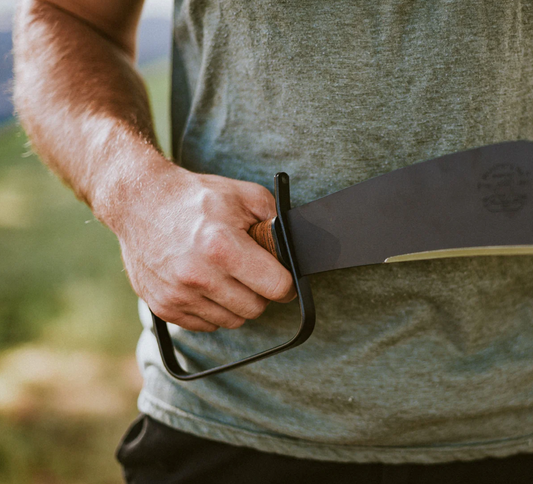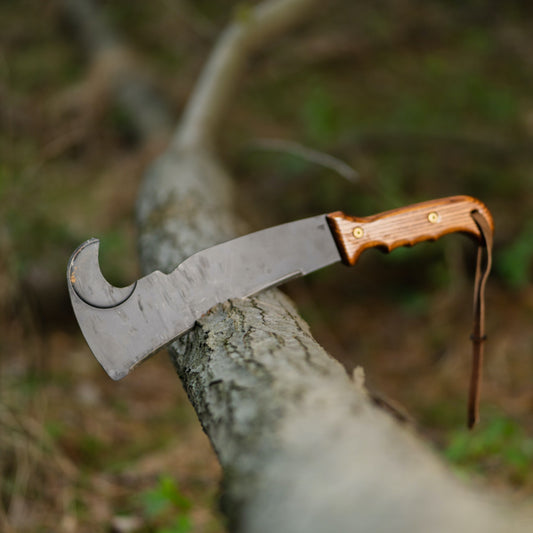One of the most frequently asked questions we receive from hunters is, “Can you use a machete to skin an animal?”
The short answer: Yes… and no.
A machete can be used for skinning, but it depends heavily on the type of machete you carry. Skinning an animal requires controlled, precise cuts, and not every machete is designed for that level of detail. While a sharp blade of any kind is the minimum requirement, certain blade designs are much more effective than others.
What Type of Machete Works Best for Skinning a Game Animal?
When skinning, you want a blade that allows control rather than brute force. A shorter machete is far better suited for this task compared to a long, heavy one. The smaller size helps with maneuverability and reduces the risk of accidental injury while field dressing.
Key features of a machete that’s appropriate for skinning include:
- Shorter blade length for more control.
- A lightweight build to prevent fatigue during long skinning sessions.
- Even weight distribution for balanced cutting.
- A thin but durable blade for flexibility and sharper edges.
- A curved tip design to allow for smoother, slicing cuts.
A Bowie-style machete is often the best choice for hunters. With a tip inspired by the classic Bowie knife, it is designed to carve through skin and meat efficiently. Some specialized blades even feature a gut hook, making field dressing faster and cleaner.
Why Does Blade Design Matter for Skinning Wild Game?
Skinning game animals is almost an art form. One slip up and you can damage your prize or possibly injure yourself. The thickness, balance, and curvature of the blade all determine how effective and accurate the skinning process will be.
- Thin blades allow for cleaner cuts while reducing weight.
- Balanced designs prevent strain on your hand and wrist.
-
Curved edges help streamline long, controlled slices.
However, the most important factor is the quality of steel. High-carbon steel holds a razor-sharp edge longer, making the process quicker and safer. Low-quality steel dulls quickly, forcing you to exert more effort and increasing the risk of accidents.
Is a Machete or a Skinning Knife Better?
For pure skinning, a dedicated fixed-blade skinning knife will always outperform a machete. Knives are crafted specifically for precise, controlled cuts when skinning game animals.
But many outdoorsmen prefer the versatility of carrying a machete, especially when they want one tool that can handle multiple tasks. If you don’t want to carry both a skinning knife and a larger blade, a short Bowie machete is the best compromise. It gives you the precision needed for skinning while still functioning as a powerful survival tool for chopping, clearing, and camp prep.
Is the Woodman’s Pal Good for Skinning Game Animals?
Yes. The original Woodman’s Pal, first produced in 1941, is a compact survival machete that combines the best features of both machetes and knives. Its unique design allows it to handle precision cuts like skinning while also tackling heavy-duty outdoor tasks like brush clearing and shelter building. For hunters and outdoorsmen who value versatility and efficiency, the Woodman’s Pal is an excellent choice when opting for a machete for skinning.
Your All-in-One Blade for Hunting and Survival
If you want maximum precision when skinning wild game, then a skinning knife is best.
However, if you want a multi-purpose tool that can skin game animals, chop wood, clear land, and serve as a survival blade, a Woodman’s Pal machete is the way to go. Its time-tested design makes it one of the most versatile tools you can carry into the field.
View our line of Woodman’s Pal machetes and accessories today!


